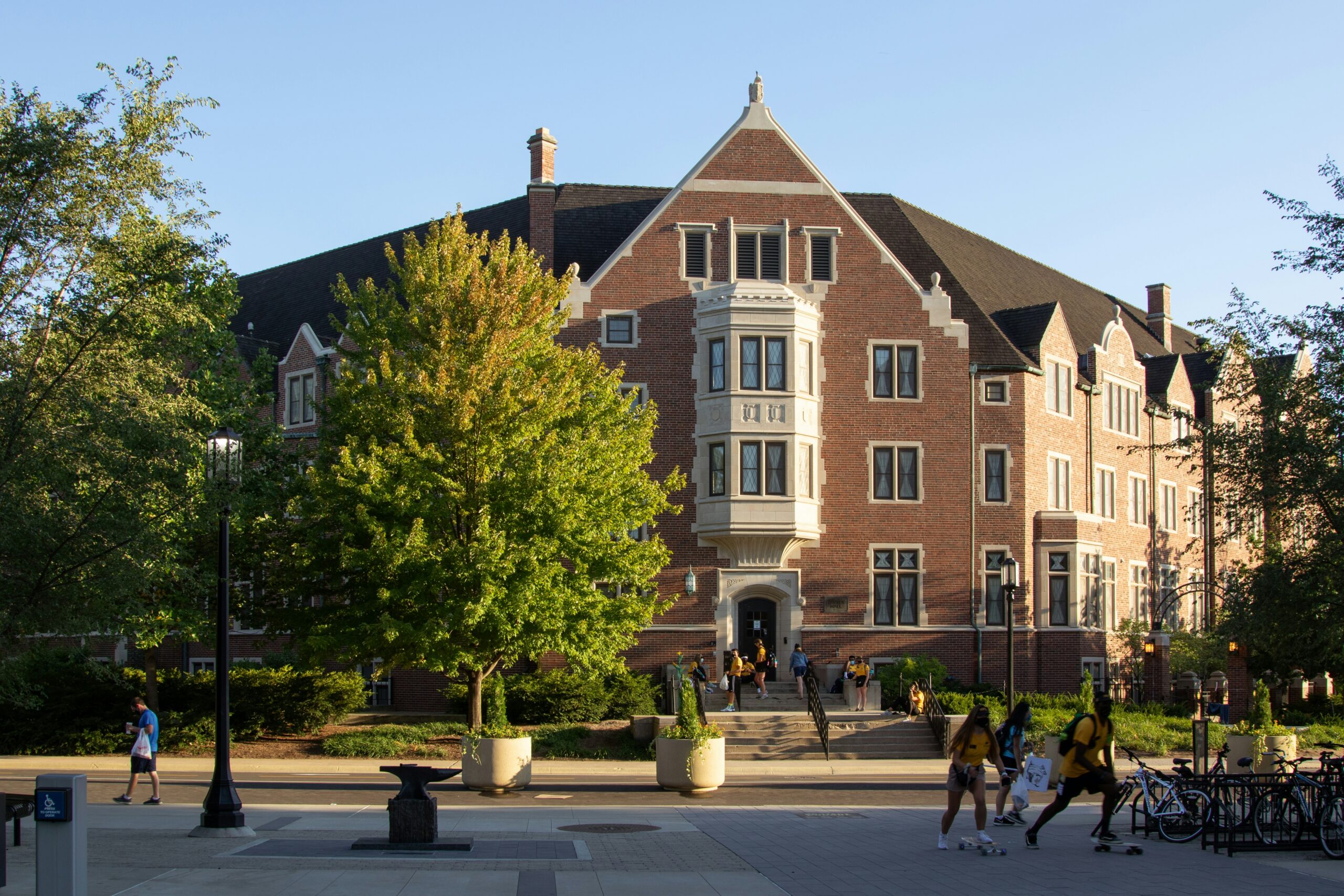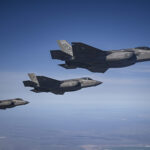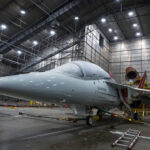The United States counts fast-moving glide bodies and strike missiles among its top defense gaps. Many allies and rivals chase the same field. Purdue’s leadership thinks HARF will narrow that gap by giving engineers frequent, precise data.
Layout and Core Tools
HARF holds two main wind tunnels and a small factory wing. Each corner of the building serves one clear function, so teams avoid walking long gear across halls. Floor drains, cable trays, and blast panels line heavy-test bays. Power feeds run through extra shielding to stop a short from ruining sensors.
- Mach 8 Quiet Wind Tunnel – Delivers steady flow at eight times the speed of sound. Reduced background turbulence gives crisper readings on pressure and heat.
- HYPULSE Shock/Expansion Tunnel – Fires brief gas pulses that reach from Mach 5 to Mach 40. Runs last only milliseconds yet record full aerothermal loads.
Technicians spent early August fixing tiny valve leaks that showed up only under full pressure. A pair of thermocouples burned out before the first calibration shot. Such snags cost time yet mark normal break-in pains, not deep flaws.
Why Quiet Flow Matters
Most hypersonic tunnels roar with random eddies that mask thin boundary layers. Purdue’s quiet line cuts that noise by roughly ninety-five per cent. When flow stays smooth, wall sensors note small heat spikes that would vanish elsewhere. This helps shape designers choose panel angles with less guesswork. Such precision directly supports efforts to accelerate the development of hypersonic air vehicles. Early data show heat-flux uncertainty fell almost one-fifth compared with older setups.
HYPULSE
The shock/expansion tunnel works on a different rule. Stored driver gas slams a diaphragm, then expands into low pressure. The blast builds true flight enthalpy for a blink. Cameras snap at two-hundred-thousand frames each second. If a coating fails, the crack appears frame-by-frame. Only one other U.S. university owns a system like this, making Purdue a key node for programs that cannot wait for federal range time.
In-House Making at HAMTC
A wing inside HARF holds the Hypersonics Advanced Manufacturing Technology Center (HAMTC). The shop keeps design, build, and test inside one fence. People load metal powder at dawn, print a curved panel by noon, and place it in a tunnel before dinner shift. That pace trims weeks off normal loops.
HAMTC tackles four broad tasks:
- Material trials – New ceramics, super-alloys, and composite skins face furnace cycles up to 3 300 °F.
- Process study – Crews explore additive build paths, rapid hot isostatic press, and tough brazing steps.
- Prototype runs – Small lot parts appear fast for shape checks and sensor fit.
- Component proof – Finished pieces see airflow, shock, and vibration close to final duty.
One early batch of carbon-carbon nose tips cracked near bolt holes. Engineers adjusted fiber weave and cured another set within forty-eight hours. The second lot survived full Mach 8 loading without new damage.
Ties With Neighbor Labs
HARF stands only a short walk from the Maurice J. Zucrow Laboratories, famous for rocket thrust work. A team can hot-fire an engine before lunch, then test its inlet shape in quiet flow after lunch. Shared ground speeds data cross-checks. Propulsion experts see surface heating in context, while aero groups confirm plume effects with real exhaust chemistry, not cold-flow gas.
Industry Footprint
Several defense and aerospace firms lease nearby offices: Rolls-Royce, Saab, Stratolaunch, plus smaller suppliers that avoid press notes. Access to a steady tunnel calendar means their designers iterate faster than if they shipped models to distant federal ranges. Some companies also link HARF’s work with energy innovations like the Power Station Tech Center, aiming to integrate advanced materials into future defense systems. Firms also watch the student talent pool; many interns leave campus with job offers stapled to lab notebooks.
Student Skill Pipeline
Undergraduates handle sensor wiring, CAD tweaks, and routine vacuum checks. Minor mistakes—loose lug, missed decimal, or mis-spelled label—show up often yet vanish after a short fix. Graduate cohorts run data scripts, build reduced-order flow maps, and publish peer-reviewed work tied to real hardware. By graduation, many can cite fifty or more live tunnel shots on résumés.
Early Technical Results
Within the first semester HARF produced a set of findings that moved agency milestones:
- A modified zirconia tile raised safe wall tempertaure by near 150 °C.
- Leading-edge tweeks on a glide vehicle cut shock-layer thickness 6 %, pushing range upward.
- Intake rib stiffener trimmed vibration by half on a candidate dual-mode scramjet.
National Impact
Demand for hypersonic data keeps climbing while federal test slots stay tight. HARF eases that pinch by adding civil capacity. Classified runs still route to secure bases, but early-stage tasks slide neatly into Purdue’s schedule. This complements programs like the Blackbeard Hypersonic Round, which also depend on rapid iteration and accessible test facilities. Shorter wait lists mean less idle time between computer model and hardware proof.
Quiet Flow Data in Numbers
During baseline calibration a slender 7-deg cone showed turbulence intensity below 0.1 % of dynamic pressure; legacy lines run about 3 %. That gap cuts heat-transfer margin spread by dozens of watts per square inch. Designers drop extra safety mass once numbers firm, improving weight budgets on flight hardware.
HYPULSE Snapshot
A boron-silicide panel faced Mach 25 flow for 2.6 ms before first spall. After grain-size change it lasted 4.2 ms. Data logged at half-microsecond steps prove the new mix holds strength longer. Sponsors moved the composition to next gate without debate.
March 2025 Update
A year-plus after opening, HARF rolled several upgrades:
- Thermal-barrier breakthrough – Rare-earth doped coating lifts limit by twenty-five per cent, though shows stray pin-holes in edge coupons.
- Supplier influx – Three fresh contractors opened design pods near the tunnels, chasing fine drag cuts on boost-glide noses.
- Sensor port fix – Undergraduate group used cheaper PTFE gasket to stop micro leaks that skewed pressure taps.
- Composite lay-up robot – New arm layers plies for smooth missile fore-bodies; build time now four hours not two days.
- Commercial tie-in – A small space firm tested re-entry tiles for ocean-recovered micro-sat bus, tiles stayed intact through Mach 20 pulse.
Next Step Hints
Directors eye a possible Mach 12 quiet line and stronger pumps, pending funds. More optical ports may arrive for high-speed schlieren video, plus extra furnace bays for long cycling life tests. Similar strategic planning occurred when DARPA cancelled its DRACO nuclear thermal propulsion project, shifting resources toward more immediate aerospace priorities. Nothing fixed yet, but planning boards list rough drawings.
Closing View
HARF compresses idea, forge, and flow into one address. The layout saves hours, the tunnels give clean data, and the shop lets crews rebuild parts without shipment lag. Minor faults still surface—blown fuse here, mis-routed hose there—but they get patched the same week. For the wider defense network, those tight loops may prove decisive, letting U.S. programs adjust designs before rivals lock theirs. Purdue’s staff call that outcome worth every gasket they burn along the way.
REFERENCE SOURCES:
- https://executivegov.com/2023/06/purdue-applied-research-institute-unveils-facility-for-hypersonic-flight/
- https://www.aero-news.net/bannertransfer.cfm?do=main.textpost&id=FAFC67A3-5506-4286-AE77-41400206F193
- https://www.purdue.edu/research/features/stories/purdue-applied-research-institute-opens-41m-hypersonics-and-applied-research-facility-on-campus/
- https://www.aerospacetestinginternational.com/features/how-a-new-multimillion-research-center-will-accelerate-the-development-of-hypersonic-air-vehicles.html
- https://www.nationaldefensemagazine.org/articles/2023/8/2/new-facility-aims-to-propel-us-hypersonics-research



